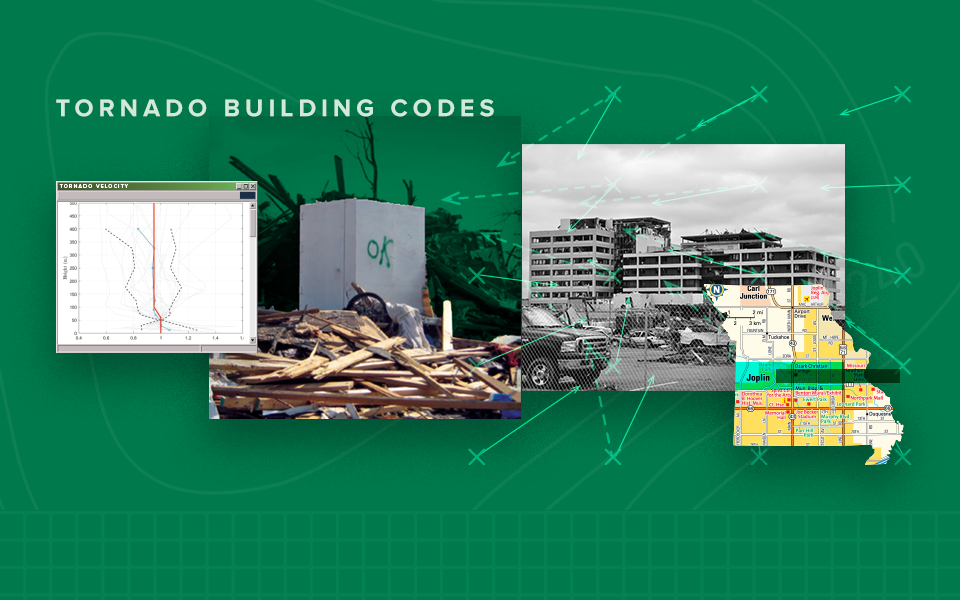
Decades of research have gone into understanding tornadoes and how they impact buildings. Now that new understanding is making its way into building codes.
B. Hayes/NIST
Sirens blared across Joplin, Missouri, on a spring afternoon in 2011, just 23 minutes before the tip of the deadliest tornado on official records descended from the clouds and touched the ground.
This tornado maxed out the scale - a five out of five on the Enhanced Fujita (EF) scale, according to the National Weather Service.
Directly in the path of the vortex was St. John's Regional Medical Center, a huge hospital complex that employed more than 1,000 people. The staff had done tornado drills before and quickly jumped into action, ushering patients and visitors away from the windows as dark clouds blotted out the sun. Then the lights went out. Ventilators stopped working. The storm had torn apart an electrical substation and the hospital's emergency generator building, causing a total loss of power. The occupants were in complete darkness when the doors and windows blasted open, shooting broken glass and furniture through the hallways.
It took less than a minute for the mile-wide tornado to pass through St. John's before moving on to tear through public schools, retirement homes, grocery stores, and suburban neighborhoods. The entire tornado lasted about 30 minutes, but by the end of it, a quarter of Joplin was destroyed and 161 people had lost their lives.
Just hours after the tornado hit Joplin, the National Institute of Standards and Technology (NIST) began a long-term study of what went wrong that day. After more than a decade of work, that research is making its way into standards and codes to make new buildings safer.
Tornadoes Are a Serious Problem
Because of its unique geography, the United States has more tornadoes, and more intense tornadoes, than any other country. Cool, dry air from the Rocky Mountains collides with warm, moist air from the Gulf of Mexico to twist up into more than 1,200 tornadoes per year.
And they're deadly.
Tornadoes have killed more people in the United States than hurricanes and earthquakes combined. Part of that is because of the short warning times - on average 10 to 15 minutes. If you're caught in a tornado, there is no time to evacuate. You must rely on the walls around you. Your local building code could be the difference between life and death.
But back in 2011 it was rare for engineers to factor tornado resiliency into their building designs. Joplin didn't have regulations for helping hospitals resist tornadoes. After the disaster, some buildings survived while others were demolished. It was important to figure out why.
Learning From Disaster
Within 48 hours of the Joplin tornado, a small team from NIST was in Missouri to study the damage. Marc Levitan, who had been hired only a few months before, was part of the team. He was shocked by the devastation.
"You try to keep your emotions in check because people lost their lives," he said. "They lost their livelihoods. They lost their property. They lost everything. Everybody's belongings are just littered all around." He knew that this disaster would be the start of years of study to figure out what went wrong and how to prevent it from happening again.
">






